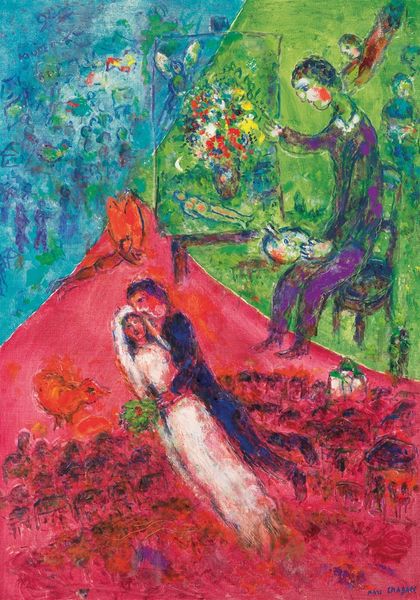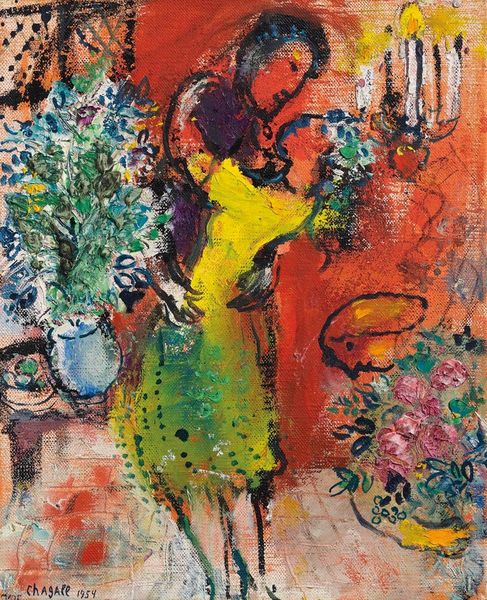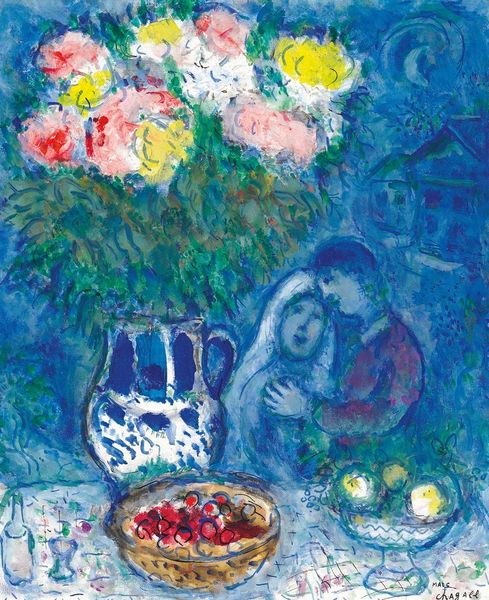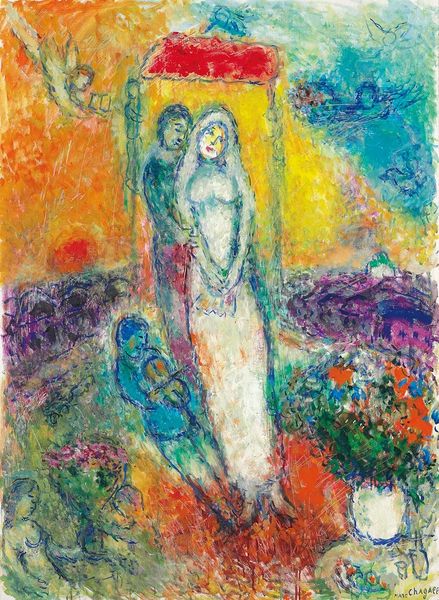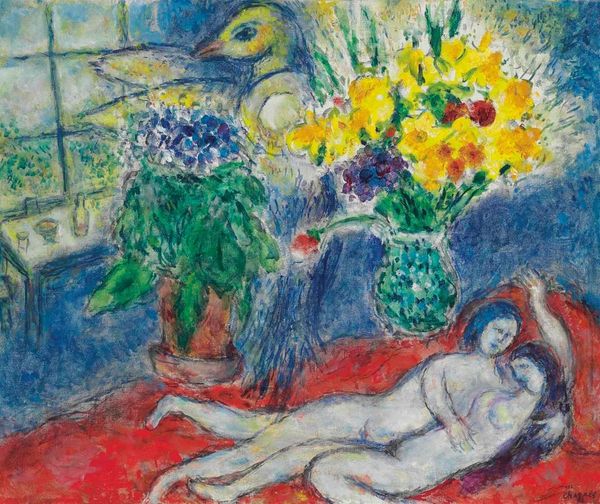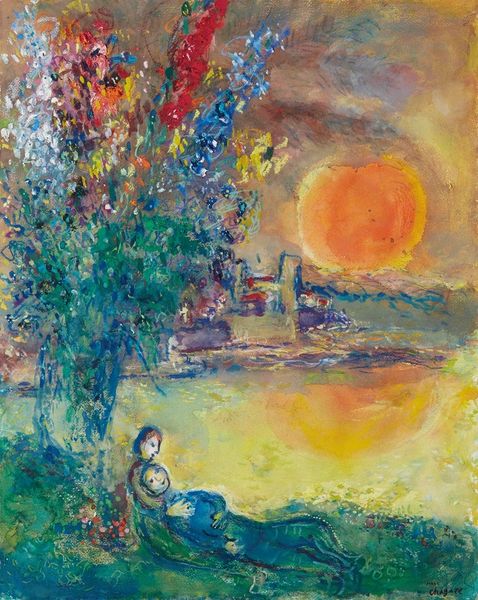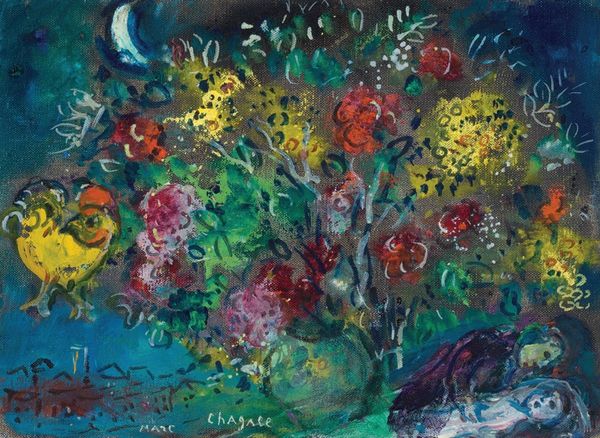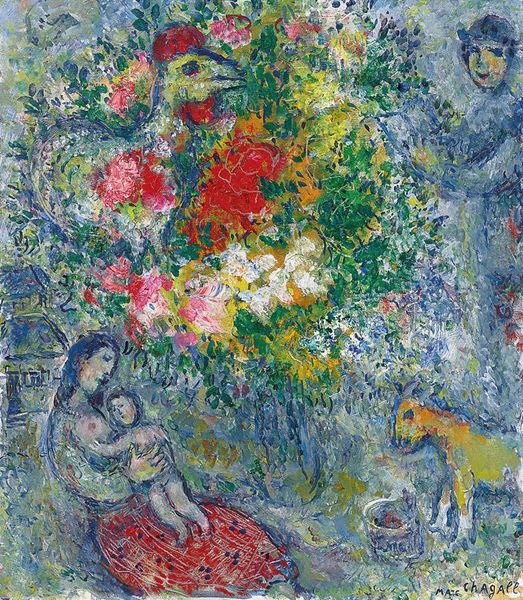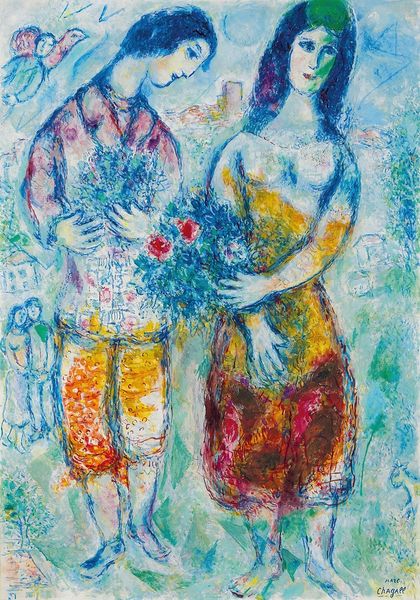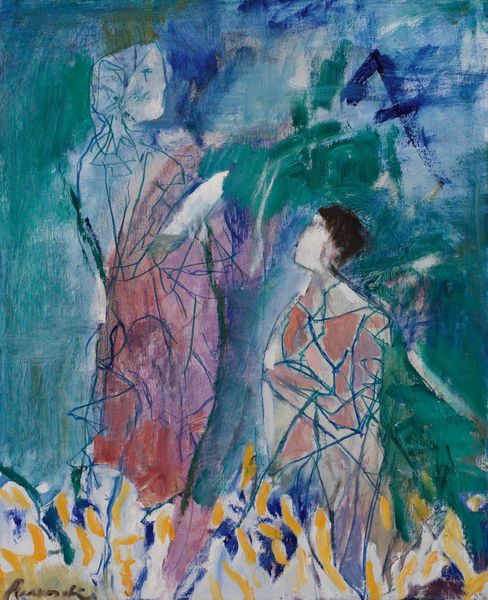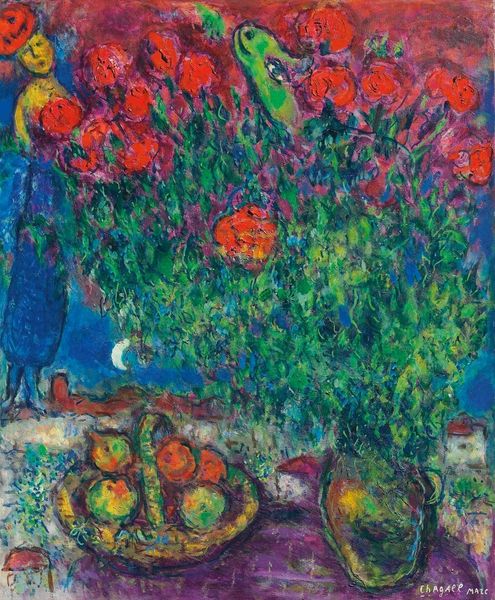
Copyright: Modern Artists: Artvee
Curator: Look at this gorgeous, late-period Chagall. "Le couple aux deux bouquets," created in 1982, is exemplary of his sustained, expressive style. What’s your initial take on it? Editor: Overwhelmingly cheerful! The impasto is thick, almost sculptural in places, especially on those flowers. You can really see the labour of layering the acrylic paints. It's celebratory in its materiality. Curator: Indeed, Chagall never abandoned his pursuit of joy. You see his familiar dreamlike narrative here, where memory, folklore, and romantic ideals converge. The bouquets symbolize offering and abundance, deeply rooted in the socio-cultural ritual of courtship. Editor: I see it. There’s a sort of constructed folk craft aesthetic—less concerned with refined painting and more about an accessible form born of pure expressive labour. He made it a point to engage materials directly and celebrate his ability to do so. Curator: Absolutely. And it’s vital to consider the historical context: a celebrated artist in his 90s still contributing significantly to the art world, his paintings finding a eager and broad public audience. How do you see that reception influencing his output? Editor: It must have reinforced his methods! I wonder if this late-career work faced similar challenges regarding craftsmanship that artists with material practices still battle today: high art versus a more utilitarian output. Curator: Possibly. But Chagall's place in the art historical canon was largely cemented. These late works, vibrant as they are, solidified his reputation rather than sparking debate. The social narrative around him emphasized longevity and enduring artistic vision. Editor: Yes, his ability to sustain such a distinct practice across decades…it's almost akin to a type of artisanal consistency. Considering his materials, and the physicality he embedded, adds more depth to the art-historical analysis. Curator: Agreed. Ultimately, it's a work infused with hope, reflective of Chagall's perspective toward the world and toward art history itself. Editor: Well, viewing his painting with an eye toward the labor of artmaking—the tactile impression and constructed aspects—has only added layers of depth and complexity to the initial cheerful response.
Comments
No comments
Be the first to comment and join the conversation on the ultimate creative platform.
